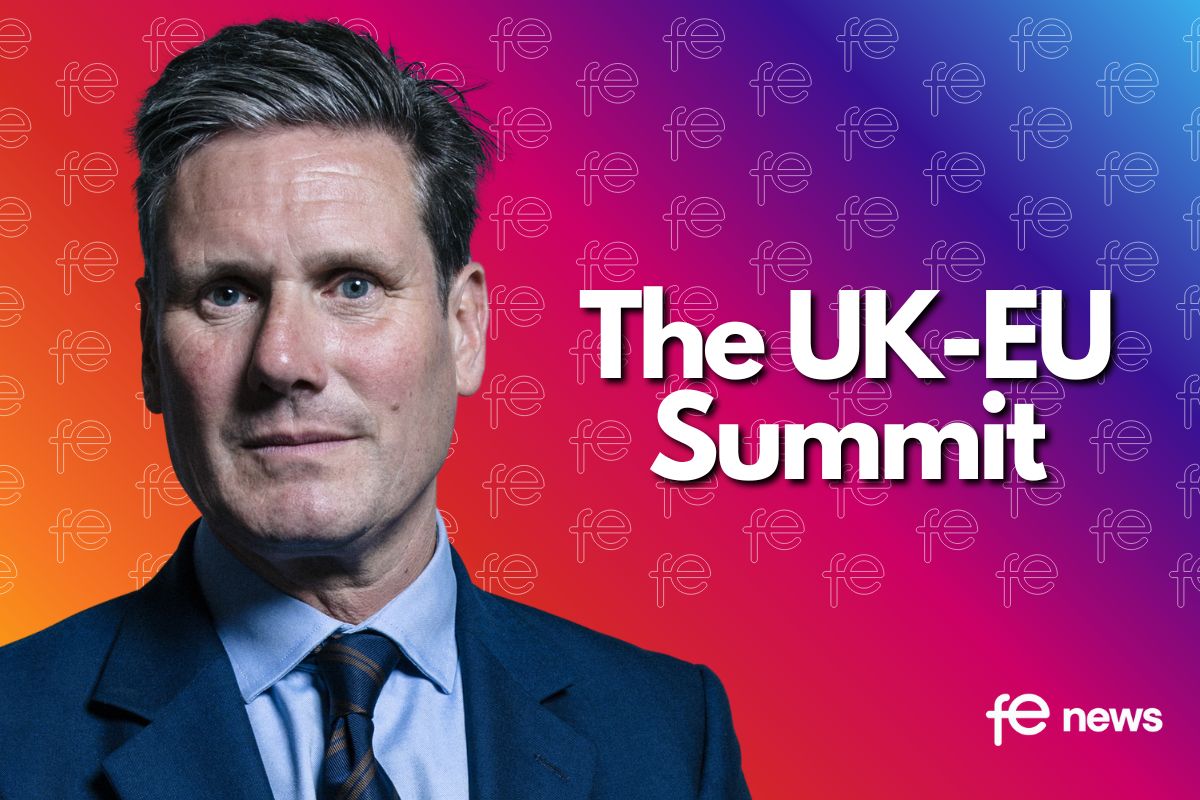“Wage-price spiral may already be starting” as labour shortages continue to hold back growth

Today (19/07/2022), ONS released this months labour statistics. Find key stats and our sector response piece below.
The UK employment rate increased by 0.4 percentage points on the quarter to 75.9%, but is still below pre- coronavirus (COVID-19) pandemic levels. The number of full-time employees increased during the latest three-month period to a record high. Part-time employees also increased during the latest three-month period, continuing to show a recovery from the large falls in the early stages of the coronavirus pandemic.
The most timely estimate of payrolled employees for June 2022 shows a monthly increase, up 31,000 on the revised May 2022 figures, to a record 29.6 million.
The economic inactivity rate decreased by 0.4 percentage points to 21.1% in March to May 2022. Since the start of the coronavirus pandemic, the increases in economic inactivity were driven by those who were economically inactive and who did not want a job. This group have now also driven the quarterly decrease during the latest period.
The UK’s female workforce is booming. The number of working women has now reached 15.7 million – a rise of 2million since 2010 with more women progressing into senior, higher-skilled jobs.
Sector Response
Chancellor of the Exchequer, Nadhim Zahawi said:
“Today’s figures underline how strong our jobs market continues to be, providing encouragement in uncertain economic times – as we know being in work is one of the best ways for people to get on and support their families.
“I am acutely aware that rising prices are affecting how far people’s hard-earned income goes, so we are providing help for households through cash grants and tax cuts.
“We’re working alongside the Bank of England to bear down on inflation, providing support worth £37 billion this financial year for the cost of living, and investing in skills to help people get into work and progress.”
Stephen Evans, Chief Executive of Learning and Work Institute, said:
On the cost of living rises:
“The cost of living crisis is laid bare today as real regular pay saw its biggest quarterly fall on record dating back to the start of the century, seeing a drop of 2.8% from March to May 2022. With energy bills set to rocket further in the autumn, this must be top of the new Prime Minister’s in-tray. But the crisis is being felt unevenly with larger pay rises in sectors like finance, up 6.2%, while the public sector saw the lowest pay rises, at 1.9% – much lower than inflation. With public sector pay bodies set to report shortly, this highlights the need for action to tackle recruitment and retention challenges in our public services.”
On the recruitment crunch:
“The UK has seen the biggest drop in its employment rate of the major G7 economies, driven by an exodus of over 50s from the workforce. Despite a welcome fall in economic inactivity of 144,000 in the last quarter, it’s still up 360,000 since the start of the pandemic. There are now twice as many people economically inactive due to sickness as there are unemployed people. This helps explain why, despite employment still being down, employers are struggling to find enough staff.
Our recent report showed other countries recovering quicker than the UK. The Government should review and reinvest the £2 billion underspend from its Plan for Jobs into a new plan to re-engage the thousands of people who left the workforce through the pandemic.”
On workless young people:
“Every young person deserves the chance to make the most of their talents, so supporting the hundreds of thousands of young people locked out of the jobs market must be a social justice priority. It’s also an economic imperative, given employers are hiring at record levels but still struggling to fill all their roles. Today’s figures show that, despite recent recovery, there are still 624,000 16-24 year olds who are not in full-time education but are economically inactive. With record vacancies, we need to tackle the issues uncovered by today’s research to boost growth, improve our public finances, and help every young person reach their full potential.
Ben Harrison, Director of the Work Foundation at Lancaster University, a leading think tank for improving work in the UK:
“Workers across the UK are facing shrinking pay packets as inflation bites. Today’s figures show real wages (excluding bonuses) are down by a record 2.8% on the year, as inflation wipes out regular pay increases of 4.3%. With the Bank of England forecasting inflation will rise to 11% by the end of the year and energy prices set to soar, things are likely to get worse before they get better.
“The harsh reality is it will be acutely worse for the six million people in the UK who are in severely insecure work, and already face low pay and uncertain hours.
“Yet we haven’t heard anything from the Conservative leadership candidates that suggests they really recognise just how tough the squeeze is going to be for millions of workers.”
“The next Prime Minister must bring forward a clear plan for how they will support the most in need as the cost of living surges, and strengthen employment rights to ensure all workers are protected by decent terms and conditions.”
* Figures quoted on work insecurity are from the Work Foundation’s UK Insecure Work Index (May 2022).
Tony Wilson, Director at the Institute for Employment Studies said:
“These figures are a timely reminder of the challenges the next prime minister will face. All the talk of tax cuts and ‘re-doing Brexit’ won’t help firms with the biggest problem they’re facing, which is finding the workers to fill their jobs. This is feeding through into annual private sector pay growth of more than 5%, and pay growth in double digits across a range of private sector services. This is double the rate of pay growth we saw over the two decades before the pandemic. The trouble is, firms can’t cover these rises through higher productivity or lower profits and so are passing them on to customers, with business surveys now showing labour costs as a key driver of rising prices. In the private sector at least, there are signs that a ‘wage-price spiral’ may already be starting. In the public sector however the picture couldn’t be more different – with pay rising by less than 2%. It is markets, not militancy, pushing pay higher.
“Even despite these rises, soaring inflation is pushing ‘real’ pay negative – falling by 2.2% in real terms in the private sector and by a huge 5.6% in real terms in the public sector. This is now the seventh month in a row that pay has fallen in real terms, and means that real pay is below where it was in 2008.
“Today’s figures also reiterate that these recruitment problems are being driven by labour shortages. For three decades, we’ve met higher demand with higher supply, but since the pandemic this link has been broken. Although employment has risen this month, there are still nearly a million fewer people in the labour force than on the pre-pandemic trend, with this being driven particularly by fewer older people in work and more people out of work due to long-term ill health. This is not only adding to inflation but it’s holding back growth. The new prime minister, whoever they are, will need to address this as a priority. The good news though is that we have underspent by at least £2 billion on preparing for an unemployment crisis that never came. We need to reinvest those savings in a new plan to raise participation and support economic growth, with more support in particular for older people and those with health conditions who want to work.”
Nye Cominetti, Senior Economist at the Resolution Foundation, said:
“People are feeling the effects of the cost-of-living crisis in their pay packets rather than their job security. Despite healthy wage growth in the private sector, near double digit inflation means that their real-terms value is falling at a record rate.
“But while everyone is experiencing pay packet pain, the jobs market at least remains resilient with unemployment close to a record low, inactivity falling and employment rising.
“There are also signs of some older workers returning to the workforce. The big question is whether this pattern will continue to hold in the though months ahead.”
TUC General Secretary Frances O’Grady said:
“Working families need financial security.
“But real wages are falling at the fastest rate since current records began.
“We can’t go on like this. UK workers are suffering the worst pay squeeze in modern history.
“The priority for the country must be to get wages rising across the economy – not tax cuts.
“That means decent pay rises for public servants, a higher minimum wage and stronger bargaining rights for working people and their unions.”
TUC analysis published earlier this month revealed that the UK is on course for the worst real wage squeeze in the G7.
Walid Koudmani, chief market analyst at financial brokerage XTB comments:
Unemployment Rate:
“As widely expected, the unemployment rate remained unchanged at 3.8% in the most recent report as the job market continues to be strong after a period of uncertainty and after many have returned to the workforce following the impact of the Covid 19 pandemic while the number of hours worked remains slightly below pre pandemic level. This could be encouraging news for the Bank of England which may choose to proceed with an aggressive policy in an attempt to handle inflation. We could be hearing more on this today when governor Bailey speaks at 18:45.”
Average Earnings Index:
“Average earning index 3m/y unexpectedly dropped to 6.2% while expectations indicated a reading of 6.7% following a previous reading of 6.8%. This could be quite troubling considering the already worrying impacts of rising prices on consumers who are having to choose more carefully what to spend on. This continues to show that consumers are increasingly being transferred the production and transportation costs which have been boosted by energy prices and general inflation.”
Anthony Painter, Director of Policy at CMI commented:
“The labour market is the safety valve for the economy currently with still buoyant activity creating new opportunities for households to supplement income. The fundamental position though is tough: basic pay falling well short of price increases, growth low, and inflation high. This means the overall the squeeze on living standards will be severe.
“Many households are burning down savings acquired during the pandemic and incurring debt but this will run its course. So unless inflation returns to much lower levels, the current position is unsustainable with lower growth and a reversal of the labour market performance quite possible.
How we get to lower inflation is key with a need for steady policy making and continuing support for extraordinary energy and food costs, especially for those least able to afford them. These policies in themselves will take additional pressure off employers and the labour market.”
Institute for Employment Studies Analysis of Data:
‘There is mixed news in today’s figures. After very disappointing data last month, this month has seen significantly stronger data on employment and economic inactivity, with the prospect that employment could return to pre-crisis levels by the end of the year (if – a big if – the cost of living crisis and interest rate rises do not lead to a wider slowdown). In particular, economic inactivity (the measure of those out of work and not looking and/ or not available for work) appears to be falling back for older people, after very large rises through the pandemic.
On the other hand though, there are a number of worrying signs in today’s pay data. Pay overall continues to fall sharply in real terms, with soaring inflation wiping out strong nominal pay growth (with nominal pay growth well ahead of the pre-pandemic rate). However underneath this, there are signs that private sector pay is being driven by continued labour shortages and may not be sustainable, especially in private sector services, while public sector pay is barely growing at all – leading to very large real-terms falls.
This will be a very challenging set of circumstances for a new Prime Minister and Cabinet to take on, with the need to raise pay in the public sector, address shortages in the private sector and navigate falling real incomes even as government support payments kick in. As we have said in previous briefings, our view is that a key priority must be to raise participation in the labour force – in other words, to boost labour supply through better support for those out of work, not just try to weaken labour demand through interest rates. There are savings of at least £2 billion that could be put to use to do this, from underspends on measures for the unemployment crisis that never came. Firms will need to step up too, as many are already doing, with inclusive recruitment, flexible job design, and improving job security, quality and support at work.’











Responses